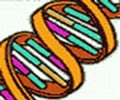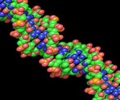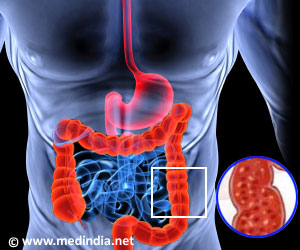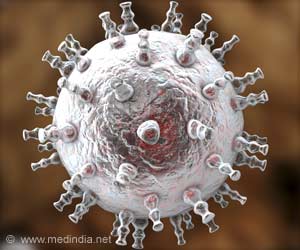Devastating to humans and livestock are the medical, humanitarian and economical impact of viral diseases.
Devastating to humans and livestock are the medical, humanitarian and economical impact of viral diseases. There are no adequate therapies available against most viral diseases, largely because the mechanisms by which viruses infect cells are poorly known. An interdisciplinary team of researchers from the University of Zurich headed by cell biologist Prof. Urs Greber now presents a method that can be used to display viral DNA in host cells at single-molecule resolution. The method gives unexpected insights into the distribution of viral DNA in cells, and the reaction of cells to viral DNA.
Click chemistry detects viral DNAFor their studies, Greber and his team with PhD students I-Hsuan Wang, Vardan Andriasyan and senior research scientist Dr. Maarit Suomalainen used cell cultures and human adenoviruses causing respiratory disease and conjunctivitis, herpes viruses and vaccinia virus, the latter in collaboration with Dr. Jason Mercer and his PhD student Samuel Kilcher from the ETH Zurich. To label the DNA of an intact virus, the scientists turned to click chemistry – widely applicable chemical reaction types. Prof. Nathan Luedtke from the Institute of Organic Chemistry at the University of Zurich, and PhD student Anne Neef developed a new class of "clickable" chemical molecules. "Our molecule is incorporated into viral DNA without affecting the biological functions of the DNA, and it can be used to label the DNA for fluorescence microscopy," says Luedtke.
Defense response of infected cells visible for the first timeGreber and his team infected human cells in culture with the chemically labeled viruses, and observed the behavior of the viral DNA during entry into cells. "Using this elegant method, we can reveal that not all the incoming viral DNA enters the cell nucleus as originally expected, but a significant fraction remains in the cytosol, the fluids of the cytoplasm," explains Greber. According to the scientists, this phenomenon may be part of the antiviral defense reaction. "For the first time, we can display the localization of incoming viral DNA, and link it to anti-viral defense or infection mechanisms," says Greber. The researchers show that cells of the same type take up different amounts of viral DNA into their nucleus. Greber suspects that the nucleus has antiviral defense reactions, akin to the cytosol, and these defense reactions are variable between cells. With the new method in hand, this is now subject to future studies. The scientists suggest that their procedure can be applied to other DNA viruses, or the HI virus (HIV).
Source-Eurekalert














